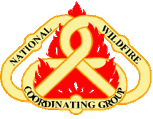The Kaniksu Complex, at this late stage of the fire was basically split into two zones because it was in two different States (WA and ID), in two different Regions (6 and 1), on two different Forests (Colville and Idaho Panhandle), with two different Land Management Plans, ways of thinking, et cetera.
We were still in fairly regular mop-up mode in certain areas due to the exceptionally heavy fuel loadings and the warm, dry, and breezy days between occasional wet weather events. In the areas without heat, we were in fairly heavy suppression repair (rehab) mode with a lot of moving parts - "Iron and Heavy Metal" in the form of excavators, skidders, dozers, road graders, and low boy tractor-trailers.
Our safety record was very good, with no major accidents or serious injuries, and only a few minor incidents. We had IMT Safety Briefings and Group and Division Breakouts after the formal briefings daily. During the suppression mode, many of the old skid and logging roads were opened as control lines, including many areas cross-country without roads and/or cutting off switchbacks. As in any fire suppression operation, many trees were bulldozed and/or cut by Falling Teams and/or Hand Crews, both for the actual fireline construction and to mitigate 'hazard trees.'
The Repair Group had completed their assignments in several of the other Divisions which were fairly 'cold' and without mop-up duties in the lower elevations and were now moving into the higher elevations with denser fuels and more 'heat' in them.
There were several, out-of-region Resource Advisors (READ's) working with both groups throughout their respective assignments, but mainly with the Repair Group. At this point, all the READ's were under the 'guidance' of a LEAD READ, an out-of-region Forest Service employee. There were also several other out-of-region READ's as well. There was another READ from the local area that was very knowledgeable with the area and many of the local equipment operators engaged in the Repair Operation. She had good leadership skills and was actually taking a strong interest and lead in the repair because of her local District ties and the lack of leadership from the LEAD READ.
The LEAD READ apparently did not like this set-up. He went to OPS on three separate occasions and told him: "I'm going to pull the safety card." OPS said the LEAD READ also apparently had some personal issues with the local READ. Regarding the local READ, the LEAD READ told OPS on three occasions, "I want her off this fire ..." It was clear at this point, that personal animus was overriding any ostensible leadership objectivity.
The Tower Group and Repair Group Division Supervisors (DIVS) and local READ called a meeting at Drop Point (DP) 25 on September 15th and invited me along. I felt it was a very productive meeting. After this meeting, the two READs that were present told the LEAD READ that the meeting was somewhat 'argumentative' or 'confrontational' - I don't recall the exact word used.
One of the complaints to OPS, from the READs, including the LEAD READ, was that we were intentionally cutting 'hazard trees' so that we could salvage them. The Forest Resources Group had approved decking the trees we had removed during the line construction and hazard tree removal phases for salvage. At some point during this, there was "some questions" about what a hazard tree was. This developed into another issue involving the Forest Leadership, READ's, OPS, and Safety. It was resolved when the IMT Safety met with the Forest Leadership and emphasized the extensive hazard tree issue on thie fire, especially the Cedars, which entailed about 95% of our hazard trees. He also emphasized the national-level hazard tree history and the on-going fatalities due to these 'hazard trees.' At no time were we cutting trees, hazard or otherwise, just so we could deck them for salvage removal. One of the READs also claimed he/she was almost "squished" by one of the skidders during one of the Repair operations, however, I was unable to talk to this READ about any details because I was notified of this alleged incident by cell phone text after I was demobbed from the fire. Moreover, I was informed that three of the salvage log decks had burned up, apparently from heat/fire still inj some of the decked trees.
Given that several of the READs were not Fire Suppression personnel, it appeared to me that they were definitely not accustomed to the experienced Fire Suppression personnel's manner of very direct communications, disagreements, sometimes assertive negotiating, and often aggressively working matters out to a satisfactory compromise, to get the daily tasks accomplished in a safe, efficient, and timely manner. The operators (Private Contractors) were not Government employees, so they were accustomed to getting things done in the most costly and efficient ways. Most times, the operators had the best ideas to accomplish the tasks when given leader's Intent by the Group Leaders. Unfortunately, the READs interpreted all this "aggression" as being unsafe and passed it onto the LEAD READ without bring it up to or discussing it with those allegedly involved, e.g. the Group Leaders, OPS, or any of the several Safety Officers. The LEAD READ finally brought the issue to OPS's attention when he decided to 'pull the safety card' and the fact that he wanted the READ Hydrologist 'off the fire.'
The entire Kaniksu Complex from its earliest stages was a safe operation without accident or serious injury and only minor incidents.
My delayed filing is due to recently returning from extended fire assignments in the Pacific Northwest and the SAFNET system being inoperable intermittently when I had the time to file one. |



